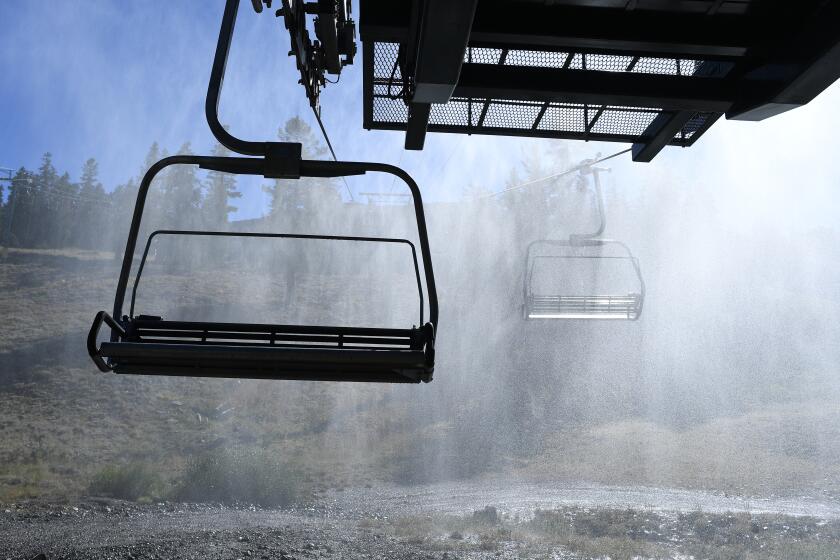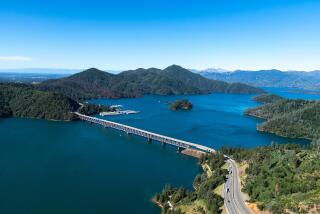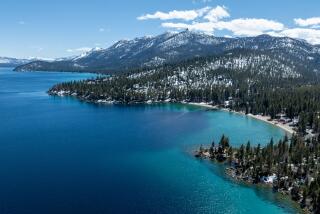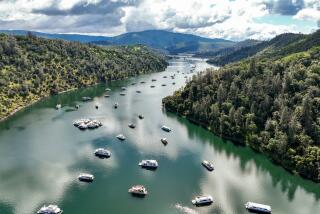Lake Tahoe waters plummet as drought, climate change plague resort
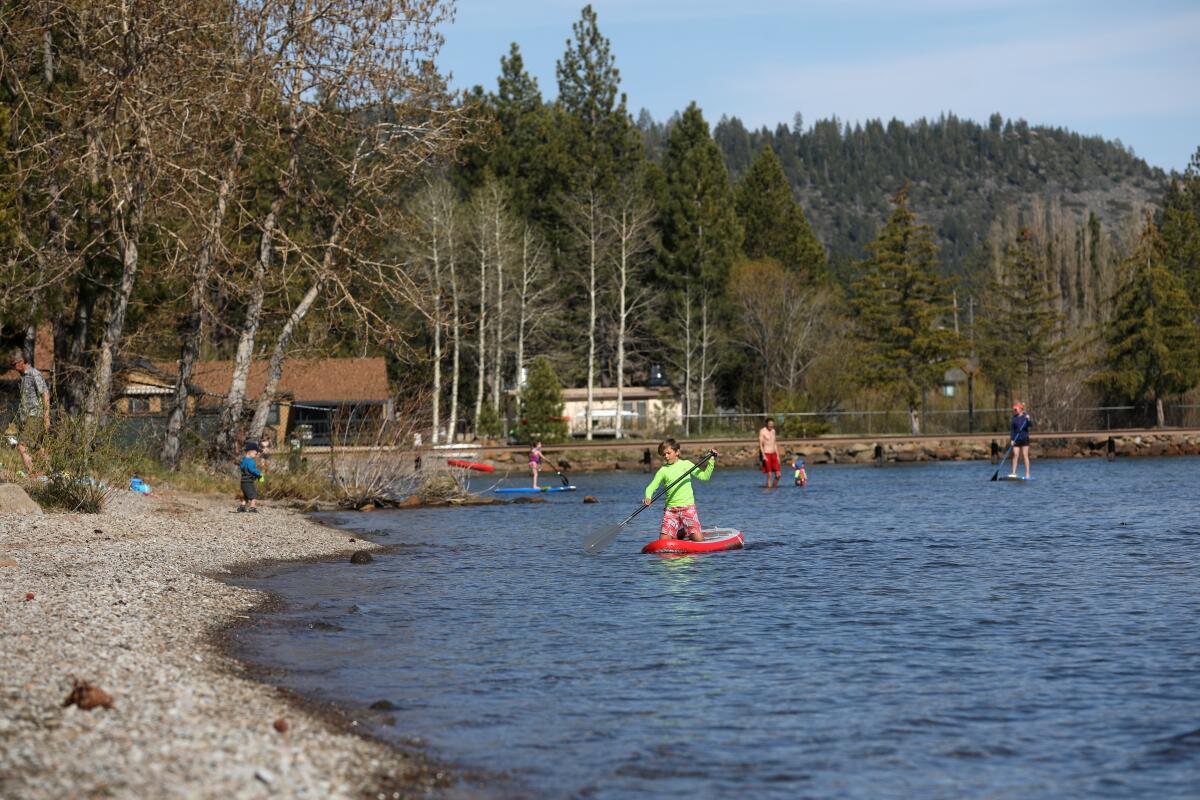
- Share via
Lake Tahoe’s water level has dropped so low that water is no longer flowing into the Truckee River and salmon aren’t expected to spawn in a major tributary this year.
Some boat ramps and docks are hundreds of feet from the water line, and clumps of stringy algae have been washing up on beaches, said Geoffrey Schladow, director of the UC Davis Tahoe Environmental Research Center.
“It’s putting us on warning that things could get a lot worse,” he said.
The receding water level, which is driven by climate change and drought, comes as the latest insult to the treasured tourist destination nestled in the Sierra Nevada. Its waters have already been clouded by smoke and ash from multiple wildfires this summer.
Lake Tahoe’s water level is always fluctuating. It is typically lowest in December and January and then increases in the spring as melting snow from nearby mountains flows down, Schladow said.
“This year, we didn’t get that bump,” he said. “It was more or less dropping since the previous year.”
Multiple boat ramps were unable to open for the summer season.
And with no game-changing precipitation, conditions have continued to worsen. The water level is usually somewhere between the lake’s natural rim, which sits at 6,223 feet, and a dam at the top of the Truckee River that is six feet higher, Schladow said. But last week, it dropped just below the rim. By Saturday afternoon, the water level was roughly half an inch below the rim — and falling, according to preliminary data from the U.S. Geological Survey.
That’s because the lake each year loses about six feet of water from evaporation — a rate of about a quarter-inch a day, which can increase with high winds, Schladow said.
“If this next year is just an average year, or worse, a dry year, it probably means that the water level this time next year will be maybe something like four feet below the rim,” he said. “And if the next year is dry, it sort of continues.”
Officials credited aggressive firefighting, improved weather conditions and past efforts to prepare for wildfire with saving the resort town.
The water last dropped below Lake Tahoe’s rim toward the end of the 2012-17 drought, which was followed by the region’s wettest year on record, Schladow said. These swings from dry to wet are nothing new.
“What is changing is that these periods of extreme low and extreme high water seem to be happening more and more frequently,” he said.
That comes as climate change is causing droughts to become drier, hotter and longer, and bursts of precipitation to become shorter and more intense, he said.
“One of the manifestations of climate change that all the models seem to agree on is that there will be more extremes,” he said. “Hot and cold, wet and dry.”
Low water levels in a major tributary to Lake Tahoe forced the U.S. Forest Service to cancel an annual festival celebrating the fall migration of the kokanee salmon. The salmon are not expected to spawn in Taylor Creek this year because of the ongoing drought, although they could return in future years if conditions allow, the Forest Service said.
It’s possible that as the water level continues to drop, the streams that flow into Lake Tahoe could become blocked by sandbars, further jeopardizing the ability of salmon to navigate them, Schladow said. Although they will spawn elsewhere, they will probably have low success, he said.
So-called terminal bodies of water that permanently lose their outflows and become cut off from tributaries are known to grow salty and inhospitable to aquatic life, although that is not expected to happen with Tahoe anytime soon.
Several inches of snow fell in Lake Tahoe last week, but it wasn’t enough to make a measurable difference in the water level. The National Weather Service said more is on the way Sunday into Monday, with 3 to 6 inches expected to fall above 7,000 feet.
Another storm is expected next weekend, said Amanda Young, meteorologist with the National Weather Service in Reno.
But overall, she said, this year has been drier and warmer than normal in the forecast area.
And long-term forecasts are calling for those conditions to persist, Schladow said — although that could change, he added.
If the area does see significant precipitation, especially rain, that will raise another concern: debris flows in recent burn areas including the watershed at the south end of the lake, which was scorched by the Caldor fire this year.
“Next spring there may be a lot of material being washed in from Trout Creek and the Upper Truckee River,” Schladow said.
More to Read
Sign up for Essential California
The most important California stories and recommendations in your inbox every morning.
You may occasionally receive promotional content from the Los Angeles Times.
